This site contains affiliate links. As an Amazon Associate, I earn a commission from qualifying purchases at no extra cost to you. Full Disclosure Here.
The AR-15 may be the most popular rifle in America, but it can still be intimidating for new shooters or even more experienced gun owners who’ve never delved into the world of owning one.
To help with that, we will give you a basic rundown on all the AR-15 calibers, including the standard “Government-issue” ones that most ARs come chambered in. We’ll start with the most basic question of “what caliber is an AR-15” and we’ll go from there and dive into some of the more unknown calibers.
Let’s dive right in.
What Caliber is an AR-15?
The AR-15 you’re probably most familiar with, the most common chambering comes in 5.56x45mm NATO. This is the higher-pressure, military version of the civilian .223 Remington, and you can feed a 5.56 AR .223 Remington all day without any issues (just don’t go the other way with a 5.56 NATO in a .223).
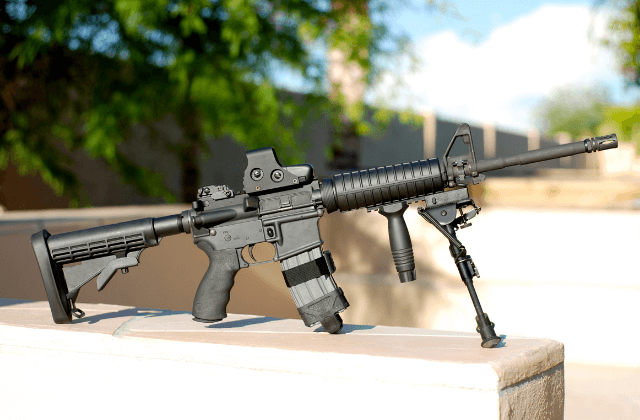
This is the original chambering for the classic AR-15 and is what most ARs you see advertised will be chambered in by default. This is the standard, the vanilla, the “normal” choice.
Let’s look at some other types, though.
What are the Different Calibers of an AR-15?
There are dozens of calibers that you can theoretically fire out of an AR-15 platform, provided you have the right bolt and barrel setup, but we’re going to look at the most common commercial calibers out there.
These are the calibers you’ll be able to find either an upper or a whole rifle available for, as well as factory ammo on store shelves without too much trouble.
.22 Long Rifle
First up, we have one of the most popular rounds on the planet, .22LR. This humble little cartridge is the only rimfire caliber on our list today, though .17HMR would also be a worthy pick.
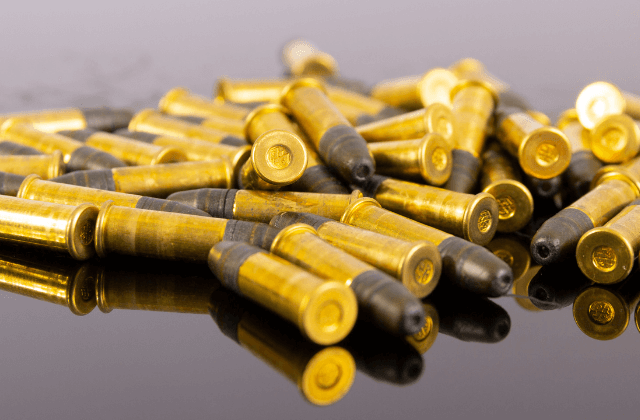
.22LR is a very versatile cartridge and is used all over the world for varmint hunting, target shooting, and competition. It’s the most popular sporting cartridge on the planet, which means you can get it anywhere ammo is sold.
It’s also probably the cheapest ammo around and has probably the lowest recoil around, making it a fantastic training round. Adding a .22LR rifle or upper to your arsenal is a great way to make training with the AR-15 platform much more affordable.
9mm Luger
Next up we’re continuing the theme of popular cartridges that started with .22LR and talking about the most popular handgun cartridge, 9mm Luger/Parabellum/NATO (they’re all the same thing).
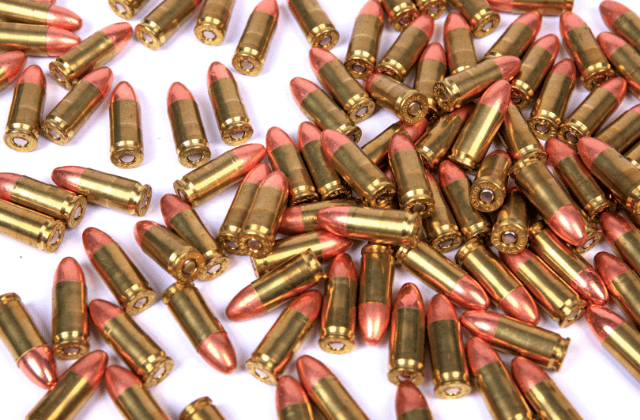
9mm is a great option for similar reasons as the .22LR in that it is extremely prevalent wherever ammo is sold and very affordable, with the added bonus that it can be used for defense and pistol-caliber carbine (PCC) shooting competitions.
9mm out of a 16” barrel is a lot more powerful than 9mm out of a 4.5” pistol barrel, which adds some extra stopping power in a defensive situation, and PCC events are cropping up all over the place which gives you a fun and exciting way to train with your AR.
And, of course, having a carbine in the same caliber as your handgun is always nice, especially if they use the same magazines, as will be common if you have a Glock handgun and a 9mm AR.
.45 ACP
For the .45 ACP, you get similar benefits to the 9mm in that it’s very prevalent and affordable but of course, it’s a bigger bullet. It’s also more expensive but still typically cheaper than most rifle cartridges.
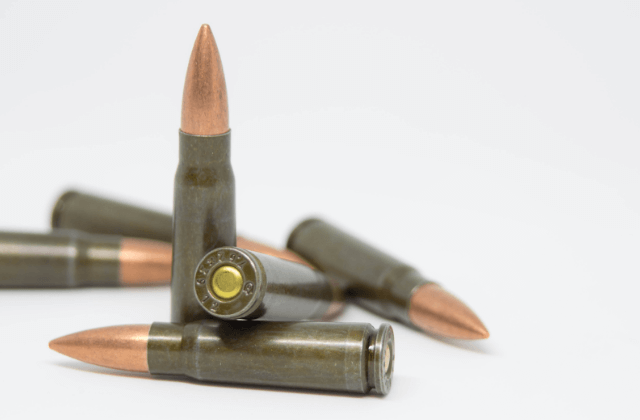
You can still run it in a PCC competition or for defensive purposes, and you get the added benefit of some great suppressed performance if you choose to go that route. And by flinging a .45 out of a 16” barrel, you get some notable velocity improvements over a handgun.
And if you have a .45 ACP Glock, your .45 ACP AR will almost certainly use the same magazines. If you don’t have .45 Glock mags on hand already, don’t worry, they’re extremely affordable.
10mm
10mm AR uppers are relatively rare, but they’re becoming more popular among those who want a pistol-caliber setup but with a little more punch than 9mm or .45 ACP. 10mm is a very flat-shooting cartridge that’s good for everything from competition to bear defense, making this a very versatile option.
The downsides are the ammo is a bit more expensive (but only a little) and a little harder to find (unless you look online). This makes it a little more niche than the .45 ACP or 9mm versions, which you can find at any sporting goods store, but it’s also more powerful so you get some benefits over the other options.
Like the previous two options, 10mm ARs usually use 10mm Glock mags, so you have plenty of options.
5.7x28mm
The FN 5.7x28mm is a bit of an odd duck in that it shoots a very small projectile very fast. This gives the round a very flat trajectory with extremely good penetration for the size.
The downside is that the ammo is very expensive and hard to find, though this is getting better now that more manufacturers are picking up the cartridge for production. There’s a wealth of 5.7×28 guns out there now, whereas even five years ago, there were…maybe four or five total.
Also, if you’re a fan of the FN P90, this is a great option because you can get 5.7x28mm AR uppers that feed from the top using P90 mags and eject through the bottom of the lower, which is frankly just freaking cool.
.300 Blackout
Now we move on to the rifle calibers, and we will start with easily the most popular option outside of 5.56, the .300 AAC Blackout.
.300 BLK was created to address a few very simple issues. Issue one: 5.56 is very inefficient out of a short barrel. It doesn’t burn all its powder and creates a big fireball that wastes energy and ruins your night vision.
Issue two: subsonic .22- caliber projectiles suck in terms of accuracy and penetration, and people want to shoot .30-caliber projectiles out of AR-15s anyway.
Finally, 5.56 doesn’t offer the best terminal performance and penetration, so a larger, heavier projectile was wanted for dealing with bigger game animals like feral hogs and whitetail deer.
The .300 BLK addresses all of these issues. It offers great performance out of a short upper, burning all of its powder in a 9″ barrel, and it hits hard inside of 200 yards, even with subsonic loads.
All this has combined to make the .300 BLK the second most popular AR rifle cartridge around and a good choice for those looking for something a little different.
7.62×39
Next, we have a very similar cartridge to the .300 BLK, though a less popular one in the AR-15 world: the 7.62×39. This Soviet-Era cartridge is the original cartridge of the AK-47 and used to be one of the go-to choices for anyone looking to buy intermediate rifle ammo on the cheap.
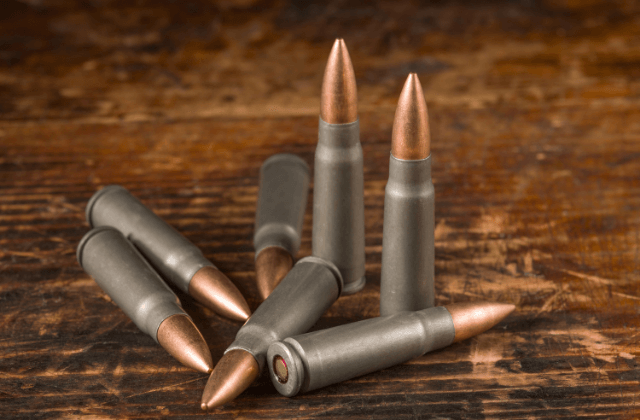
Nowadays, with import restrictions, the price has gone up enough that you aren’t saving too much with this caliber, but if you already have the ammo for an SKS or AK or you don’t mind paying the higher (but still relatively cheap) ammo prices, its a great option.
It offers good performance at short ranges in terms of ballistics, but be careful with your upper/rifle selection. 7.62×39 doesn’t like to feed well in some ARs, which is a big part of why .300 BLK exists. If you’re looking for something with similar performance but greater reliability, go with .300 BLK.
If you want something, you can shoot for $.40/round or so, the 7.62×39 is the better choice.
6.5 Grendel
Now we move onto the first of two long-range options on our list, the 6.5 Grendel. This round was developed with the goal of getting something close to the ballistic performance of the 7.62x51mm NATO cartridge out of the AR-15 platform, and it gets about as close as anything can.
This round is ideal for those longer shots and can take deer-sized game at a much greater distance than most AR-15 calibers out there.
It also provides greater accuracy than either of our previous rifle caliber options. Inside 600 yards, this is one of the best options available for hunting with an AR-15 and is one of few rounds that offer enough energy to ethically and reliably bring down elk-sized game.
For target shooting, it’s fantastic as well, with folks regularly getting hits out to 1000 yards reliably. In fact, there’s only really one commonly-available option available for the AR-15 that’s better for long-range target shooting, in my opinion. And that’s…
6mm ARC
The 6mm Advanced Rifle Cartridge is the new hotness in the AR-15 world, and it has already proven itself as a very capable target-shooting cartridge. It has a much flatter trajectory than 6.5 Grendel once you get past the 400-yard mark.
It uses a smaller and lighter projectile, so it’s not great for hunting anything larger than deer (though it is a perfect varmint cartridge for prairie dogs and the like). Still, it is a much more proficient target cartridge than almost anything else out there.
The 6.5 Grendel is definitely better for larger game, but if all you’re after is target shooting performance or just a ballistic upgrade over standard 5.56, then the 6mm ARC is the better option.
.450 Bushmaster
Now we move out of the realm of long, thin bullets traveling a long distance and into the realm of big, heavy bullets that hit hard and deliver maximum terminal performance.
.450 Bushmaster was created with the goal of getting a .44 caliber or larger projectile out of the AR-15 with enough energy to reliably put down medium game animals at distances of 250 yards, and it absolutely accomplished that.
Many loadings maintain 1000 ft-lbs or more of energy out to 400 yards, which makes the .450 Bushmaster a great option for hunting, especially for going after larger game like wild hogs. It’s also one of the relatively few straight-walled cartridges suitable for the AR-15 platform, making it a great option for states that restrict hunters to straight-walled calibers.
Visit this article on the Top Ten Best Scopes for .450 Bushmaster by Marine Approved.
Also, it uses regular ole AR mags, which is great if you already have a bunch of 5.56 magazines lying around.
.458 Socom
.458 Socom is another attempt to get more stopping power out of the AR-15/M4 platform, this time utilizing a lengthened .50 AE case necked down a bit. The .458 Socom is one of the beefiest AR cartridges around and is roughly equivalent to the .45-70 Govt in terms of performance.
If you’re determined to go after large or dangerous game animals with an AR-15, or you just want to make absolutely sure those 30-50 feral hogs get eliminated, then .458 Socom is a great choice.
.50 Beowulf
But what if you want to go bigger? What if you need something that can literally stop a truck? As usual, Bill Alexander has you covered with the .50 Beowulf.
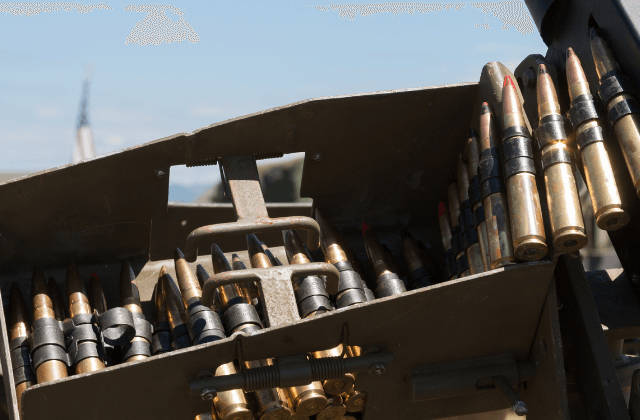
This is the most mass you’ll be able to sling out of an AR-15 until some mad scientist cooks up something new (good luck to them), so if you’re after the absolute most stopping power at close ranges, this might be it.
The round is designed specifically to penetrate windshields and standard steel body panels on vehicles without deflecting or appreciably slowing down, so if you’re hunting big game (or pickup trucks), this is a great option.
Frequently Asked Questions
5.56x45mm NATO is the most common AR-15 caliber you’ll see the most on store shelves.
The AK-47 was originally chambered in 7.62x39mm, which is the caliber you will most commonly see to this day.
Yes. 9mm AR-15s and 9mm uppers are commonly used by those who want a PDW-style gun that fires a pistol caliber in an AR-15 form factor.
Most AR-15s these days are chambered in 5.56 because a 5.56 rifle can fire both 5.56 and .223 safely, but the reverse is not true.
Conclusion
There are a lot of AR-15 calibers out there (we only covered the most common ones), which is one of the reasons this rifle is so popular. It’s an incredibly modular platform, and swapping an upper receiver and magazines to use a new caliber is a powerful advantage.
We hope you found this article helpful and informative. If you have any questions or doubts, feel free to contact us any time through our website.

